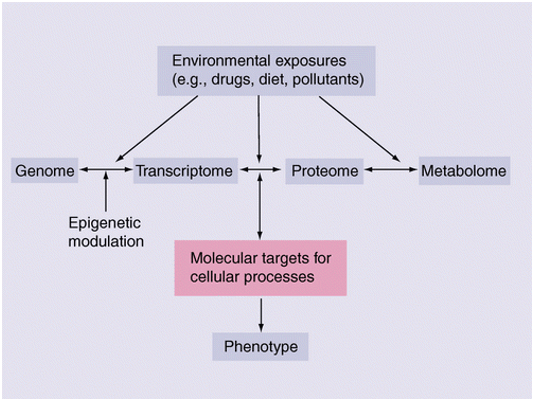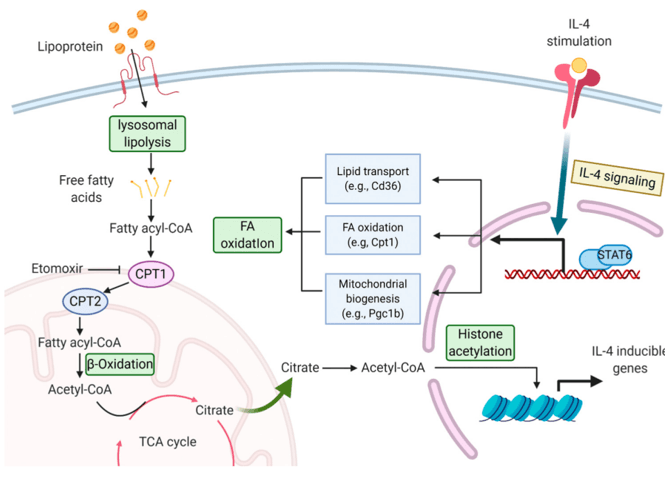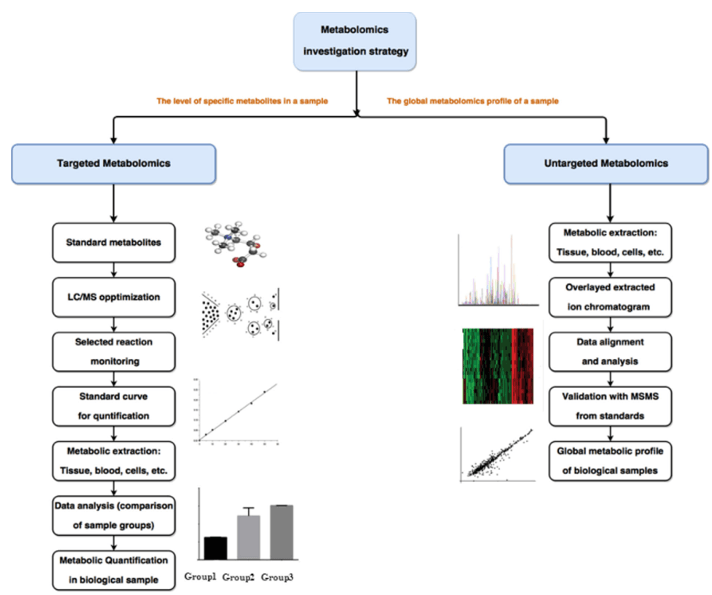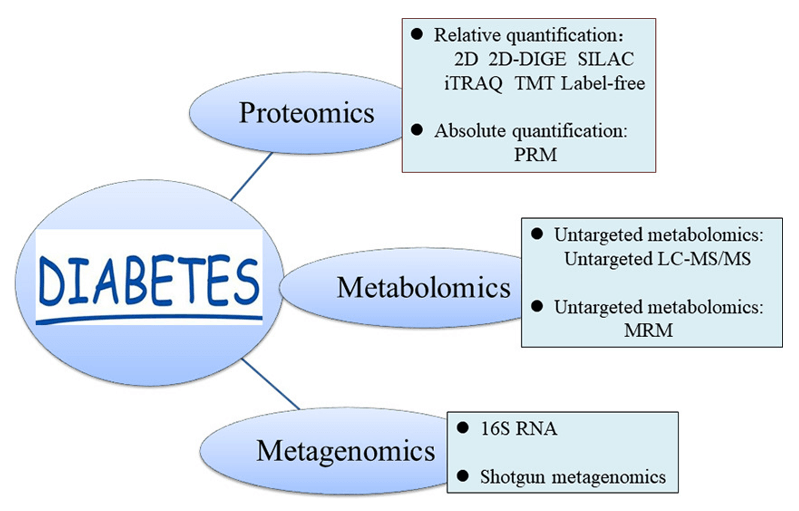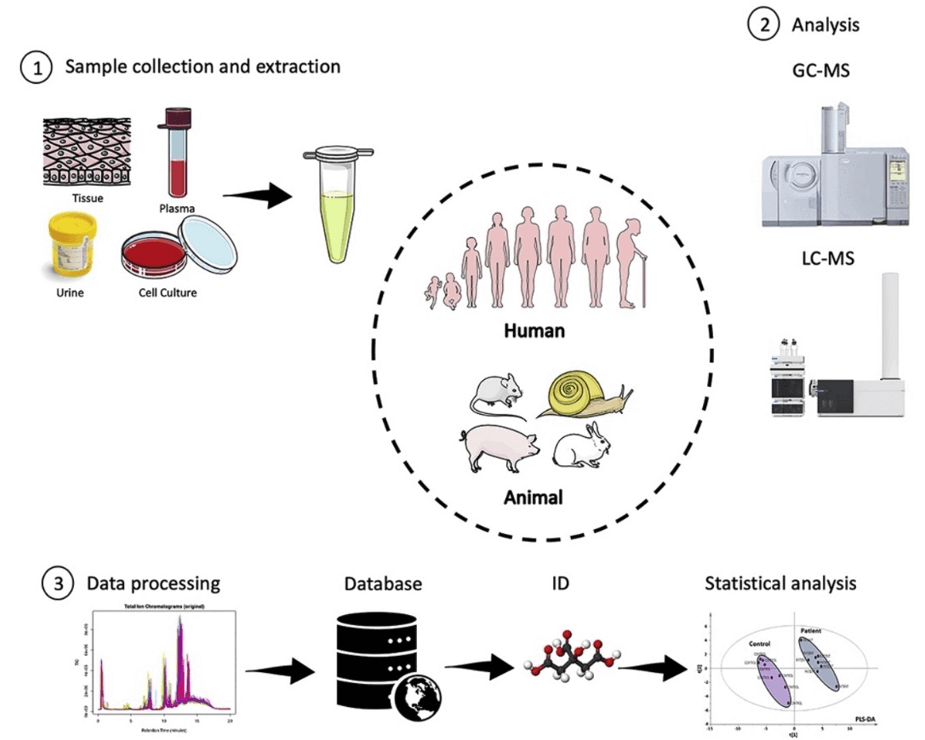Flavin Adenine Dinucleotide Analysis Service
Submit Your InquiryWhat is The Meaning and Function of Flavin Adenine Dinucleotide?
Flavin Adenine Dinucleotide, commonly referred to as FAD, is an important coenzyme involved in various biochemical reactions within living organisms. FAD belongs to the flavin group of compounds, which are derived from riboflavin, also known as vitamin B2. FAD consists of two main components: adenine mononucleotide (AMP) and flavin mononucleotide (FMN) connected by a phosphate bridge.
The Role of FAD in Cellular Metabolism:
FAD plays a pivotal role in cellular metabolism by participating in redox reactions. It acts as a carrier of electrons and hydrogen atoms, shuttling them between different enzymes and facilitating the transfer of energy. FAD acts as a cofactor for a wide range of enzymes, including oxidoreductases, dehydrogenases, and reductases, which are involved in vital metabolic processes such as the Krebs cycle, fatty acid oxidation, and the electron transport chain.
Energy Production and FAD:
The primary function of FAD is its involvement in energy production. During cellular respiration, FAD accepts electrons and hydrogen atoms from various metabolic pathways and delivers them to the electron transport chain in the mitochondria. This process leads to the generation of ATP, the primary energy currency of cells. Without FAD, the efficient production of ATP would be severely compromised, impacting overall cellular function.
FAD as a Coenzyme:
As a coenzyme, FAD assists in catalyzing chemical reactions by donating or accepting electrons and protons. In its reduced form, FADH2, it serves as an electron carrier and delivers the electrons to the respiratory chain to generate ATP. The conversion between FAD and FADH2 is reversible, allowing it to participate in multiple redox reactions.
Beyond Energy Production: FAD's Diverse Roles:
Apart from its role in energy production, FAD is involved in various other essential cellular processes. One of its notable functions is its involvement in the activation of vitamin B6, a coenzyme required for the metabolism of amino acids and the synthesis of neurotransmitters. FAD is also essential for the synthesis of nucleic acids and the production of certain hormones.
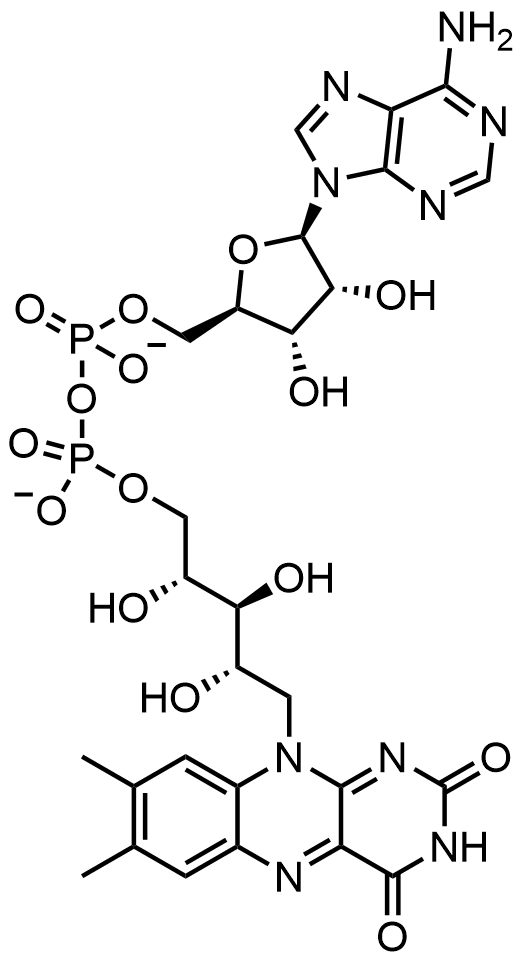 Molecular structure of flavin adenine dinucleotide
Molecular structure of flavin adenine dinucleotide
Advanced Mass Spectrometry for FAD Analysis
At Creative Proteomics, we perform FAD analysis using advanced mass spectrometry instrumentation, including high-resolution mass spectrometers such as liquid chromatography-mass spectrometry (LC-MS) systems. LC-MS combines the separation power of liquid chromatography with the detection and identification capabilities of mass spectrometry, enabling highly accurate and sensitive analysis of FAD. It consists of the following four key steps:
- Sample preparation: Biological samples containing FAD are prepared and purified.
- Chromatographic separation: FAD is separated from other compounds in the sample.
- Mass spectrometry Detection: FAD molecules are ionized and detected based on their mass-to-charge ratio.
- Data analysis: The acquired data is processed and analyzed to identify and quantify FAD accurately.
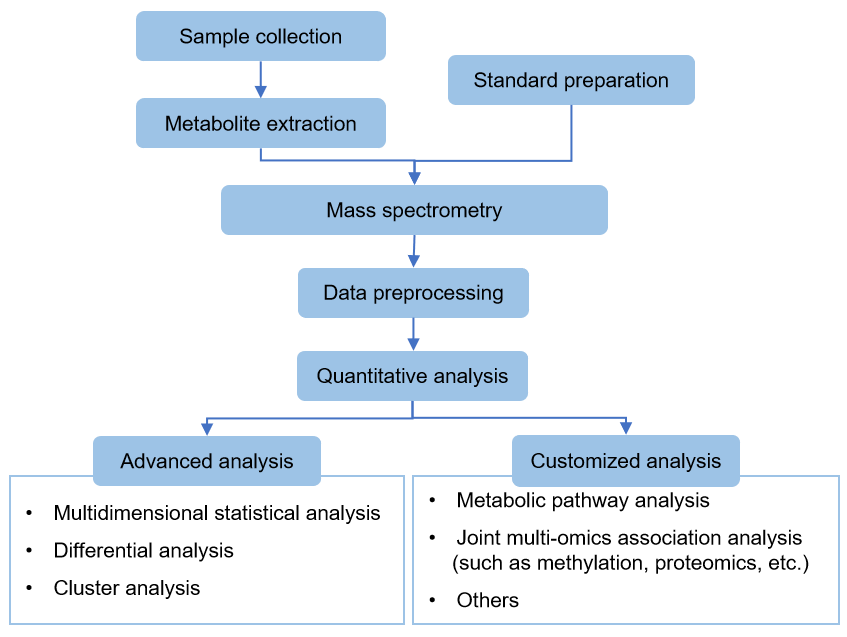
Applications of FAD Analysis
Metabolic Research: Studying FAD's role in metabolic disorders and identifying therapeutic targets.
Enzyme Kinetics: Analyzing FAD-dependent enzyme activity for understanding functionality and drug development.
Biotechnology and Pharmaceuticals: Utilizing FAD analysis for diagnostics, drug discovery, and targeted therapies.
Nutritional Science: Assessing FAD status, dietary intake, and personalized nutrition strategies.
Plant Biology: Investigating FAD's impact on plant growth, stress tolerance, and agricultural practices.
Feedback to Customers
Creative Proteomics will provide you with detailed technical reports, including
- Experimental steps
- Related mass spectrometry parameters
- Part of the mass spectrum picture
- Raw data
- Metabolic molecular identification results
Creative Proteomics offers several approaches to metabolomics studies, delivers precise and detailed data and analysis report. We can also customize the methods or establish new methods together with our collaborators, so they are fit-for-purpose and meet your specific needs. If you have any questions or specific requirements, please feel free to contact us.
References
- Riera-Borrull M, Rodríguez-Gallego E, Hernández-Aguilera A, et al. Exploring the process of energy generation in pathophysiology by targeted metabolomics: performance of a simple and quantitative method. Journal of the American Society for Mass Spectrometry, 2015, 27(1): 168-177.
- Kim M J, Lee M Y, Shon J C, et al. Untargeted and targeted metabolomics analyses of blackberries – Understanding postharvest red drupelet disorder. Food Chemistry, 2019, 300:125169.
- Wang X, Zhao X, Zhao J, et al. Serum metabolite signatures of epithelial ovarian cancer based on targeted metabolomics. Clinica Chimica Acta, 2021, 518: 59-69.




